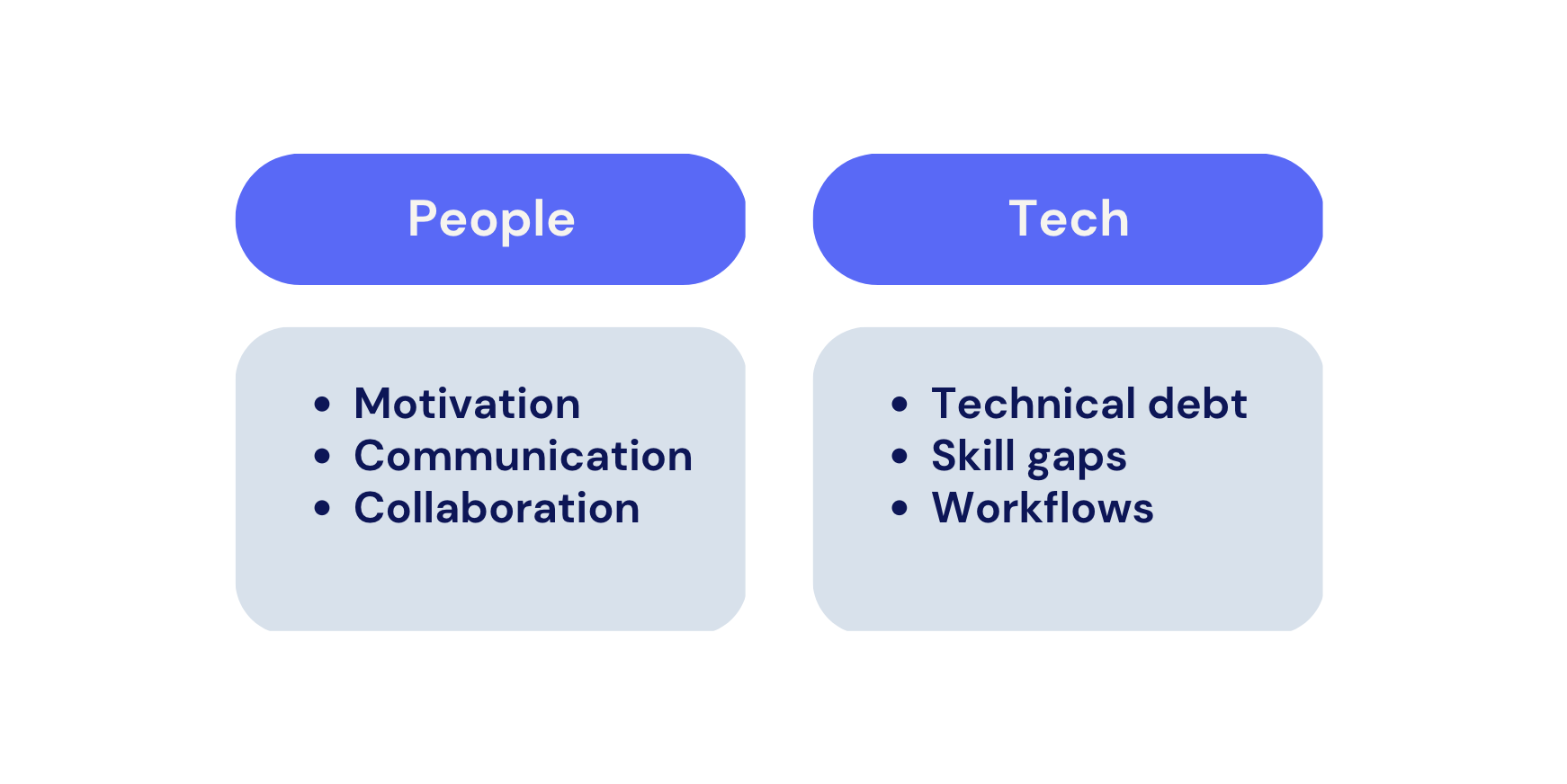Abhishek Kumar is an Engineering Manager at Google, leading 2 teams within Google Cloud. He has led multiple cross-functional teams for 6+ years across leading product companies such as Google and Flipkart, as well as early stage startups. His people-first approach enables him to quickly ramp up and increase the productivity of teams.
As customer needs evolve, companies may restructure engineering teams or create new ones to meet business objectives. The engineering managers who acquire these teams face a demanding set of expectations:
- Ensure every team member knows the tech stack.
- Define efficient technical and operational processes.
- Create a cohesive team culture.
As an engineering manager, you have to help teams become productive quickly—all while ramping up in your new management role.
It can be tempting to set ambitious goals for yourself and your engineers. However, tackling too many projects at once can overextend the team and slow you down. Over time, this can lead to missed deadlines and low morale.
So how can engineering managers make an impact quickly without causing burnout?
To help your new team succeed in the short and long term, you’ll want a ramp-up plan that:
- Targets the most pressing inefficiencies on your team.
- Sets achievable goals.
Today, I’ll cover 4 tips to reduce ramp-up time for new engineering teams while enabling long-term productivity.
1) Focus on people, then tech
Most of the issues that engineering teams face fall into one of two categories: people or tech.
When leading a new team, it’s important to build credibility with engineers. That’s why I typically start with a people-first approach. For example, instead of addressing skill gaps right away, I focus on understanding the personal and professional goals of my engineers.
From there, I delegate technical tasks to the team. As skill gaps and technical inefficiencies become clear, we can discuss them together and create growth plans.
I’ve learned that it’s much easier to address technical issues when you have a foundation of trust. If engineers see that I genuinely care about the team, they are willing to go the extra mile to ramp up quickly and push through multiple launches.
2) Listen to engineers
As you begin to set technical priorities, leadership will have ideas about how to best use engineering resources. It’s your role to:
Assess the business needs behind these ideas. Consult with engineers to find the most impactful solutions.
Engineers have unique technical expertise that can enhance every aspect of a project. If you pursue top-down initiatives without consulting engineers, your team may run into the following roadblocks:
- Technical risks: projects may lack proper consideration of technical complexities, leading to design flaws, performance issues, or even failure of the project.
- Feasibility challenges: project goals may be unrealistic due to inaccurate estimates of resources, cost, and time.
- Safety and compliance issues: noncompliance with regulations and industry standards can lead to regulatory penalties and reputational damage.
- Missed opportunities for innovation: projects fail to leverage new technologies and creative solutions.
To avoid slowing down your team, involve them in project planning as early as possible. I have engineers share their ideas in group brainstorming sessions and consolidate them in a living document. From there, I work with engineers and product managers to select the most impactful ideas.
Listening to engineers helps you identify and resolve inefficiencies before they affect the business. It also creates a layer of psychological safety that will support innovation and productivity as your team grows.
3) Make technical contributions
When you move from engineering to management, your focus shifts from writing code to managing people. However, I’ve found that making strategic technical contributions can accelerate your team in 3 ways:
- Understanding the technical complexity of a project helps you advocate for your team more effectively. As a result, you can ensure that everyone is aligned and working towards the same goals.
- You can help identify issues with design and architecture before they cause delays.
- The team sees that you are invested in their work. This helps to build trust and yield productive working relationships.
Making technical contributions is the fastest way to build a deep understanding of your team’s work. You can use this knowledge to create a ramp-up plan that targets your team’s specific needs as efficiently as possible.
4) Create growth opportunities for engineers
When forming a new team, engineers may feel anxious about adapting to new dynamics and expectations. Without a clear sense of how the changes will support their career development, engineers can quickly lose motivation.
To encourage engineers to grow with your team, work with each team member to create a personalized growth plan. These plans should include:
- Concrete steps to improve growth areas and move towards career goals.
- Timelines tailored to individual needs. For example, some engineers may be aiming for a quick promotion, while others may want to prioritize work-life balance.
At some companies, it can be difficult for engineers to get promoted. However, you can still help engineers build leadership and technical skills that align with their career aspirations. If engineers see that you are invested in their growth, they are more likely to work through the growing pains of adjusting to a new team.
Getting started
Throughout my career, I’ve often heard the phrase: people don’t leave teams—they leave managers.
Engineering managers have a wide range of high-impact responsibilities, especially during structural changes. However, managers may not realize the full scope of their role ahead of time. This can make it difficult for them to meet company expectations and lead teams to long-term success.
I developed these onboarding tips through a combination of personal experience and observing fellow leaders. When it comes to navigating leadership challenges, there’s no need to reinvent the wheel—I hope that my experience ramping up new teams can give you a head start.
Free Resources
